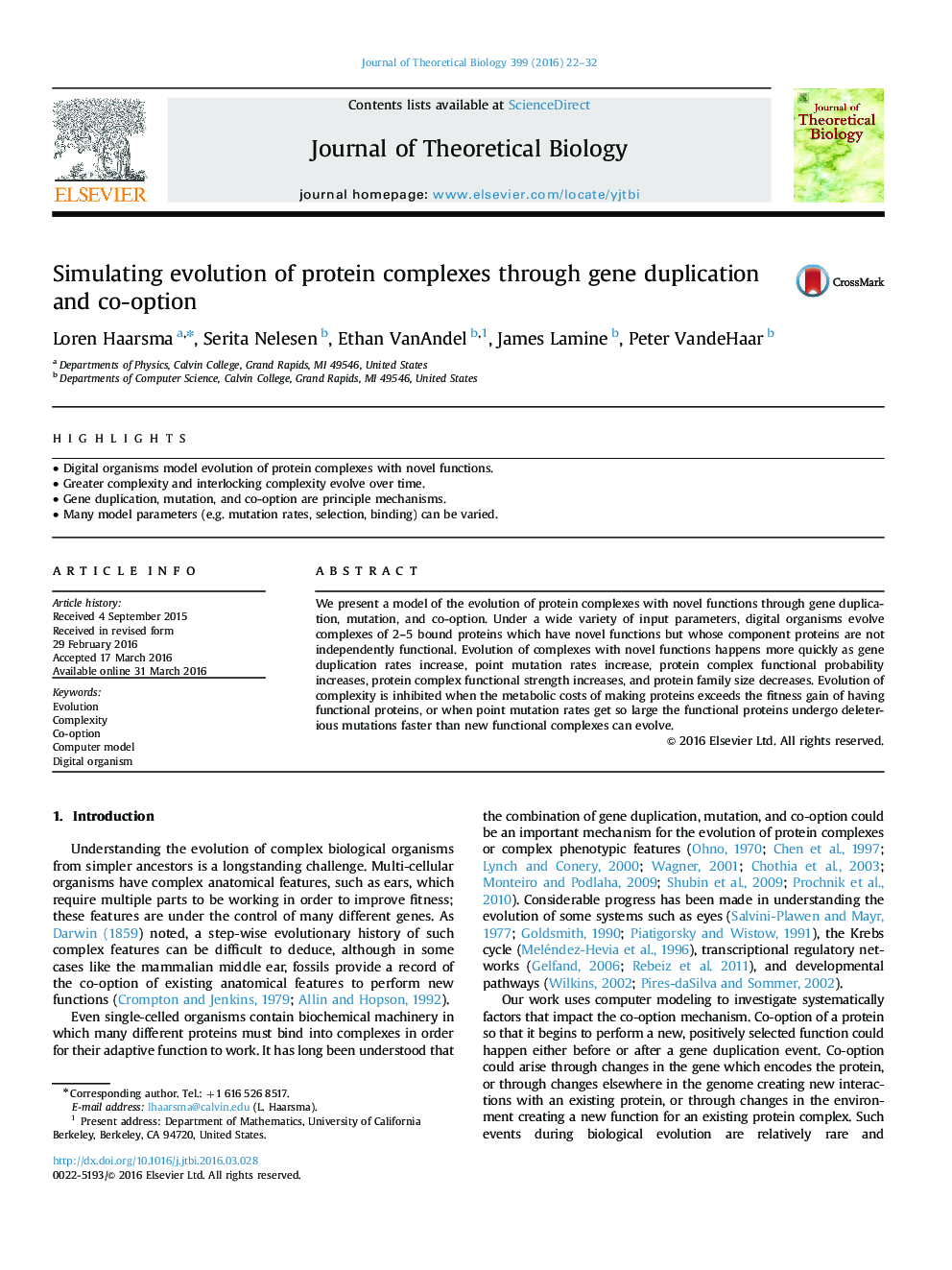| Article ID | Journal | Published Year | Pages | File Type |
|---|---|---|---|---|
| 6369220 | Journal of Theoretical Biology | 2016 | 11 Pages |
â¢Digital organisms model evolution of protein complexes with novel functions.â¢Greater complexity and interlocking complexity evolve over time.â¢Gene duplication, mutation, and co-option are principle mechanisms.â¢Many model parameters (e.g. mutation rates, selection, binding) can be varied.
We present a model of the evolution of protein complexes with novel functions through gene duplication, mutation, and co-option. Under a wide variety of input parameters, digital organisms evolve complexes of 2-5 bound proteins which have novel functions but whose component proteins are not independently functional. Evolution of complexes with novel functions happens more quickly as gene duplication rates increase, point mutation rates increase, protein complex functional probability increases, protein complex functional strength increases, and protein family size decreases. Evolution of complexity is inhibited when the metabolic costs of making proteins exceeds the fitness gain of having functional proteins, or when point mutation rates get so large the functional proteins undergo deleterious mutations faster than new functional complexes can evolve.
